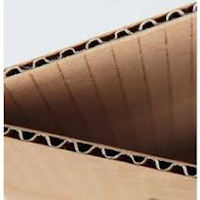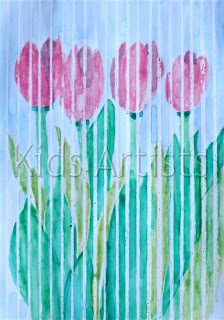You need:
- colored paper
- tamponing brushes
- white tempera paint
- pencil and color pencils
A lesson to learn the technique of tamponing with a tamponing brush: do not move the brush back and forth, but stamp. Result will be a softer texture than when using normal brushes.
No tamponing brushes in school? Give students a cotton ball in a cloth spin.
Wat moet je doen?
Schets de contouren van een paashaas. Druk zo zacht mogelijk op je potlood, want dikke potloodlijnen blijven zichtbaar onder de witte verf.
Tamponneer de haas en laat drogen.
Teken met zwart potlood streepjes rondom.
Versier de tekening eventueel met lentebloemen.
Alle kunstwerken zijn gemaakt door leerlingen van groep 4.
Beeldaspecten: nuance, textuur.










.jpg)
.jpg)




.jpg)




.jpg)










.jpg)
.jpg)
.jpg)
.jpg)
.jpg)
.jpg)
.jpg)
.jpg)
.jpg)
.jpg)
.jpg)
.jpg)
.jpg)
